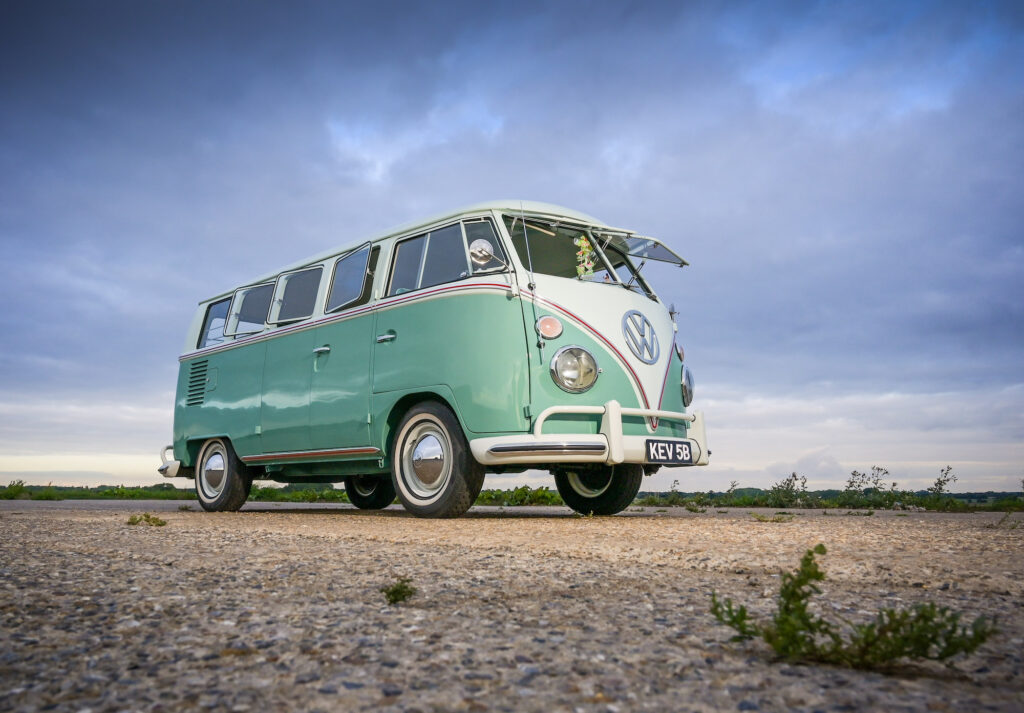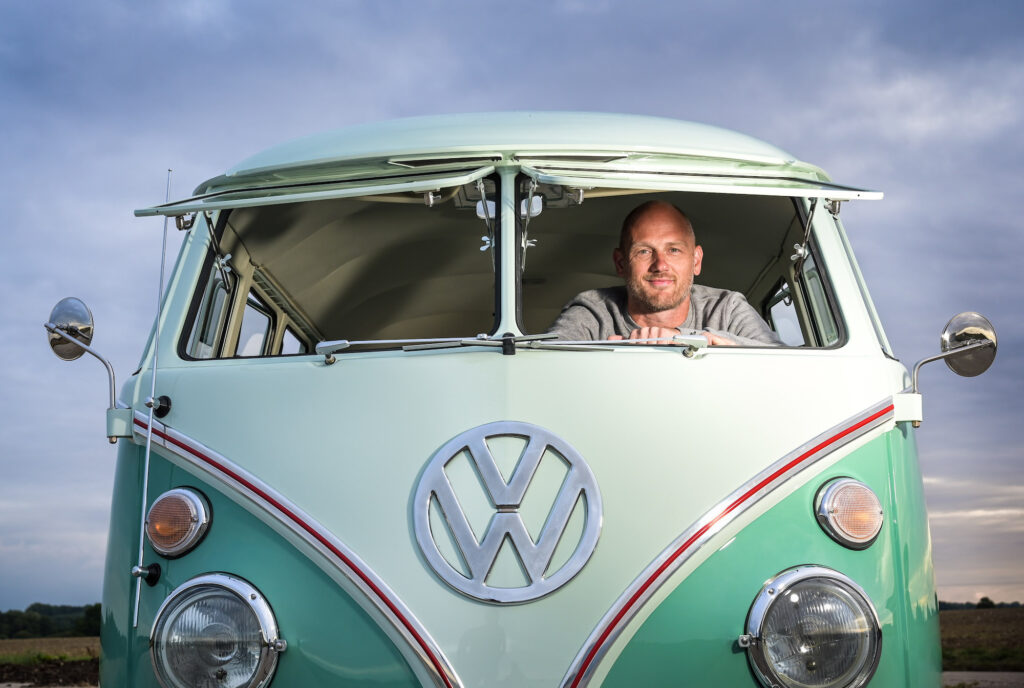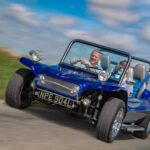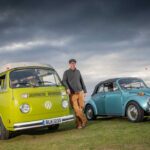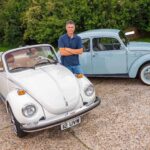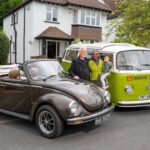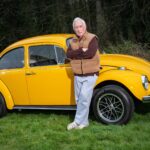By day, Kev Smith looks after some of the world’s most famous classic racing cars.
But in his spare time, he’s spent the past nine years painstakingly restoring something at the other end of the performance spectrum – a 1964, 13-window split screen VW camper Deluxe.
The result is stunning, a Volkswagen as close to perfection as you’re likely to see that moved one, albeit misguided, onlooker on its first public outing to ask: “Is this a new one?”
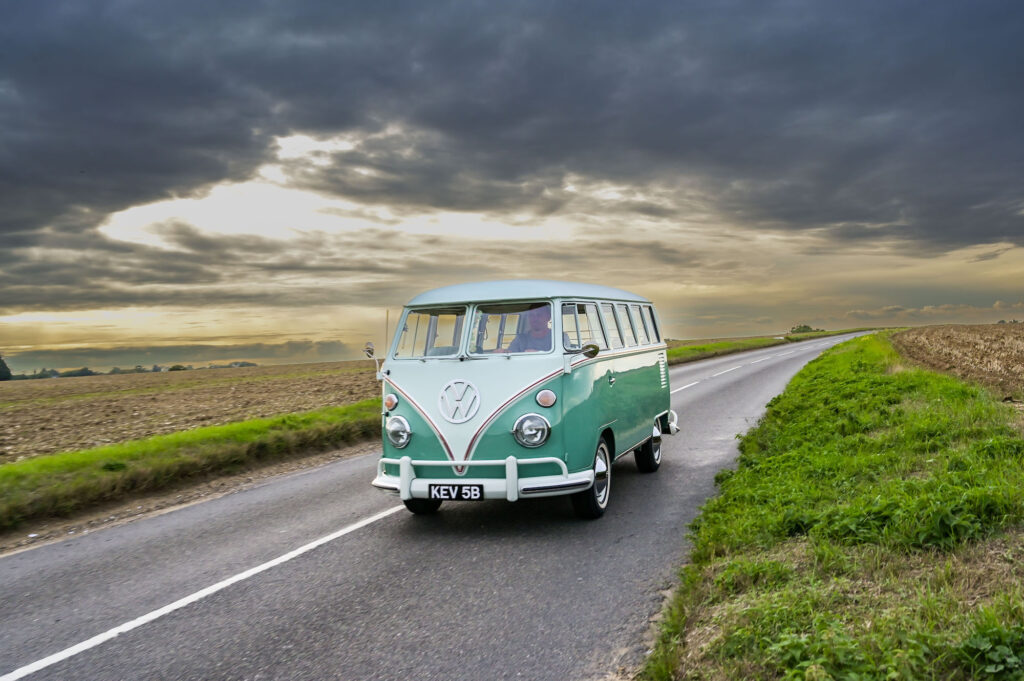
Kev has brought all his years of experience under the tutelage of some of motor racing’s top engineers to bear on a restoration that screams ‘attention to detail’.
’64 split screen camper imported from Texas
The split screen was in a pretty sorry state, and lacking an engine, when it was imported from Texas, but now it quite possibly looks better than the day it rolled off the production line nearly 60 years ago.
Its maiden voyage in Kev’s hands came on August 25, 2022, nine years to the day that he bought the bus for £5,500 from a friend at work.
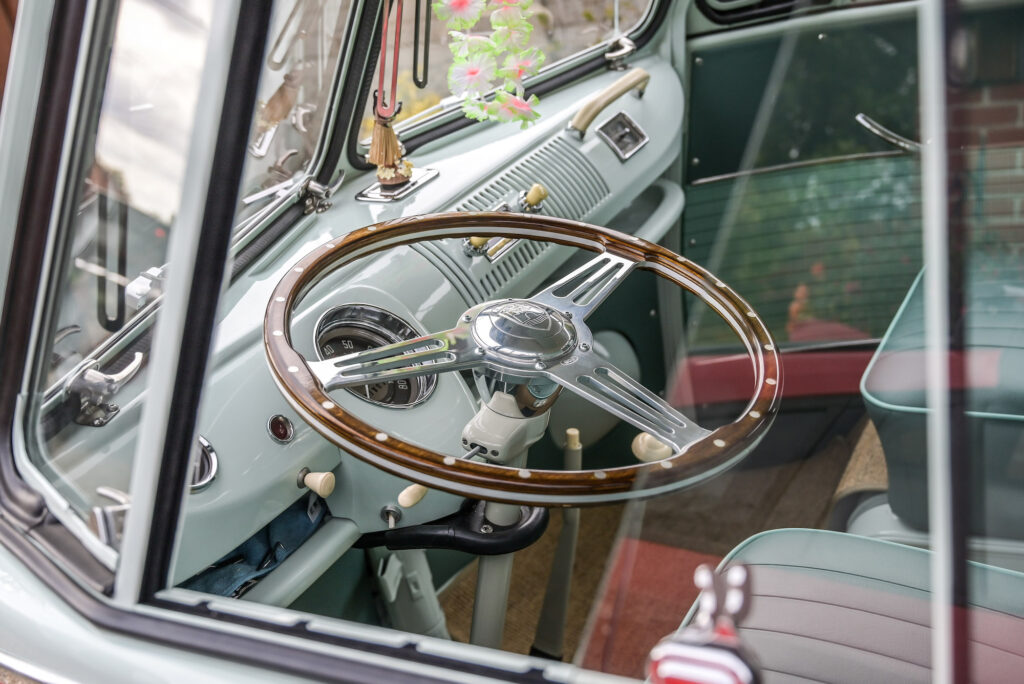
“The first time I took it out, there were people clapping,” he laughs. “I’m not sure if it was because it took me nine years to do, or they just liked it! But people everywhere love seeing it.”
At its first show, the VW Fab Festival in Norfolk, the bus was voted best in the show and shine by visitors.
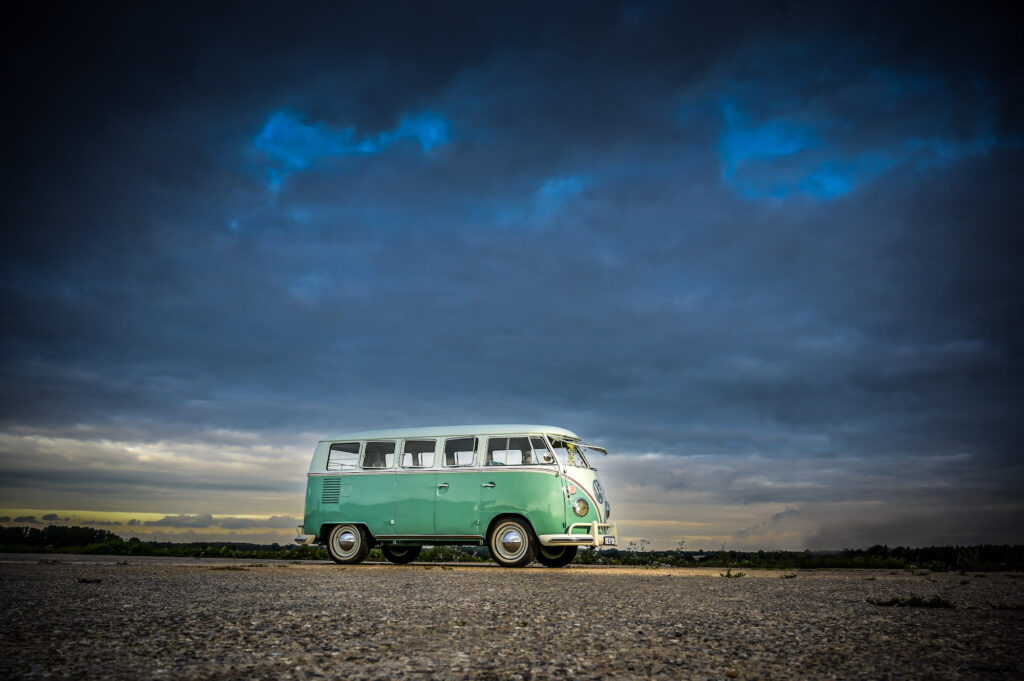
“I parked it up and wondered what people were going to make of it,” says Kev, who worked for Classic Team Lotus at Hethel for more than 20 years. “I’ve shown F1 cars that I’ve worked on, but never my own car. The amount of people who were looking round it and saying ‘did you do all this? Wow’. They were taken aback by the detail work.
“It was the people who actually voted for my bus, not the judges walking round, which is fabulous really. It’s only a little show, but it’s the people I talked to that made it special really.”
All this, despite the Splittie not being quite finished, as Kev agonised over whether to convert it into a day van with a rock and roll bed, or take it back to its roots as a Microbus.
Convert it into a day van or restore it to a Microbus?
“Me and my partner, Paula, got talking at a VW show recently, and we thought we should go original,” he says. “I think it deserves to be put back to how it was, with two bench seats in the back.
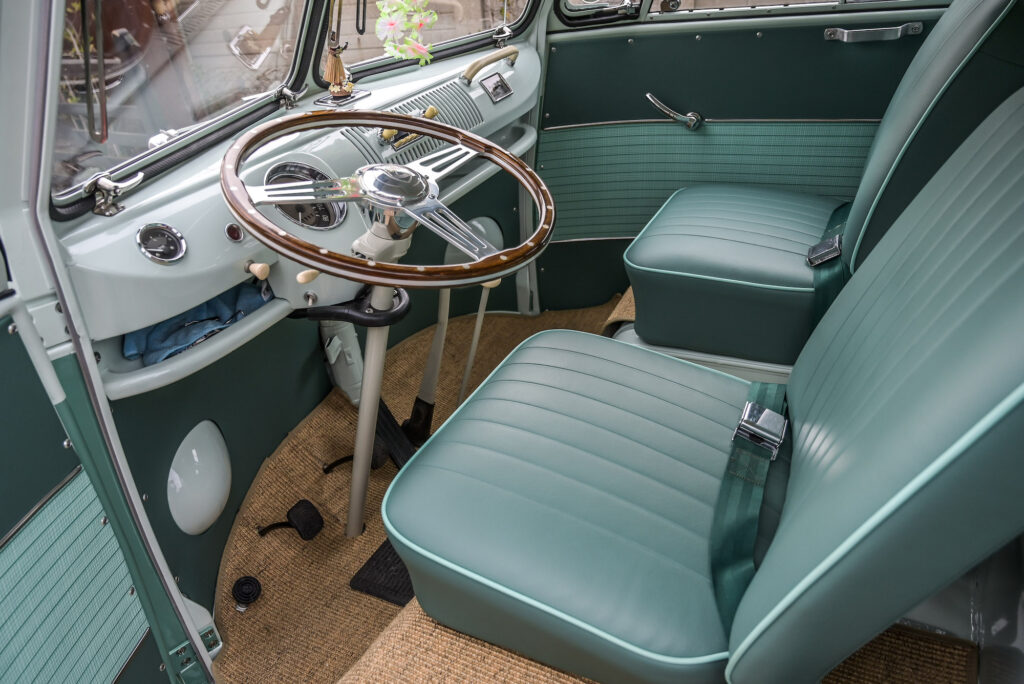
“I’ve found some seats, they’re vast amounts of money and re-upholstery is so expensive. It’s also all the trim, the ashtray, the brackets, the armrests. I’ve worked it out and it’s going to be about £4,000.”
It will bring his spent on the bus up to about £25,000, but that’s small beer compared with the sums shelled out by the owners of the classic F1 and IndyCars that Kev works on every day.
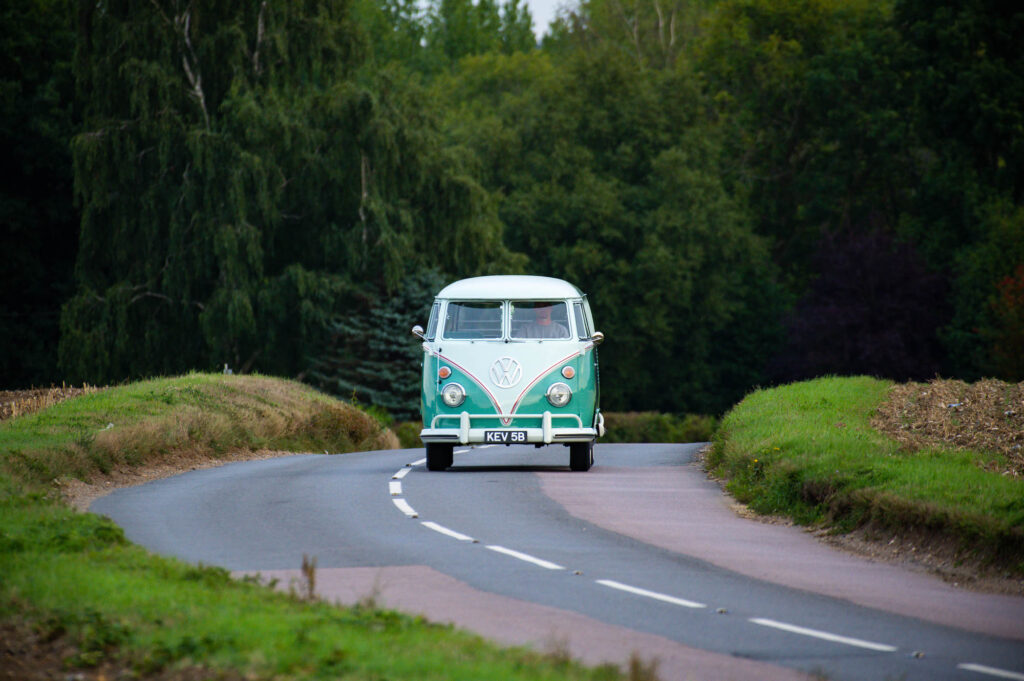
He was working in a bodyshop as a teenager when he accompanied a job seeking friend to the JobCentre.
“On the wall was this bit of paper saying ‘apprentice wanted at Classic Team Lotus’,” he remembers. “I knew Lotus, but I didn’t know Classic Team Lotus or what they did, but my mate said ‘go for it’, and I said ‘I could do, I don’t know’.
“Anyway, I did, but I didn’t hear anything for about six months until I got a phone call saying ‘do you want to come for an interview?’ I got there, and there were all these classic Formula One cars there.”
Kev started work at Hethel on January 4, 1999, a month before his 19th birthday, with only a rudimentary knowledge of mechanics gleaned from working on Minis with his dad, a welder.
Working with some of the most famous F1 cars
Soon, he was working on some of the most famous – and valuable – F1 cars in the world, raced by the likes of Jim Clark, Emerson Fittipaldi, Nigel Mansell and Ayrton Senna.
He worked his way through the ranks, learning from engineering legends like Eddie Dennis, former F1 championship-winning engineer for Lotus; Senna’s number one mechanic Chris Dinnage; Nick Yallop, responsible for the first hardened composite chassis; and Clive Chapman, Lotus founder Colin Chapman’s son.
“I was working on these cars that had serious history,” he says. “Looking back at it now, it was unbelievable.”
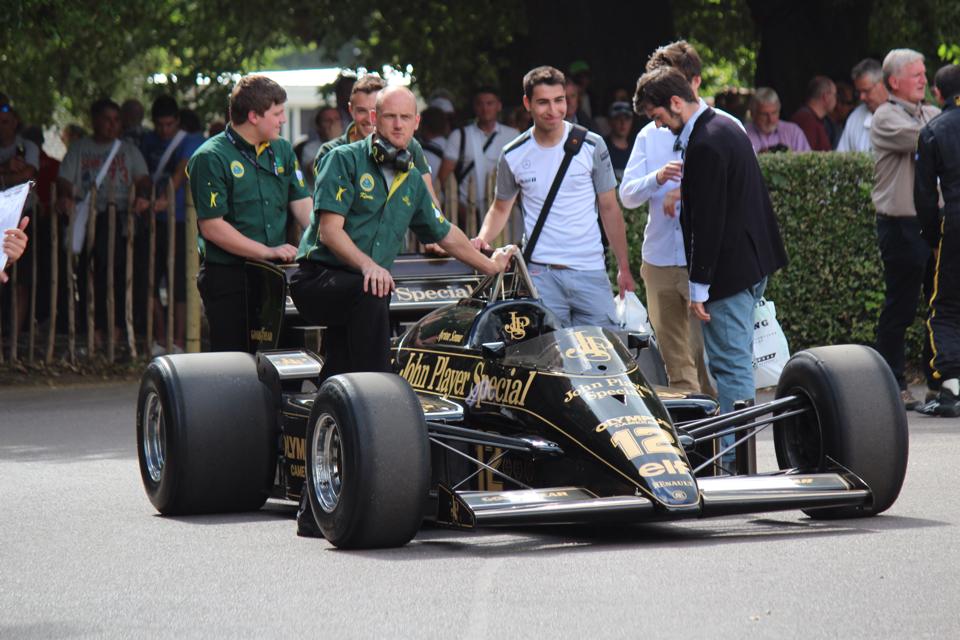
Kev became head of restorations, working on cars owned by Classic Team Lotus and wealthy customers who entrusted their historic cars to the experts in Norfolk.
To mark 20 years at Lotus, Kev sat down for dinner with Chapman, who showed him a model of Fittpaldi’s championship-winning Lotus 72.
It was a car that Chapman had recovered from a crash, and which Kev had then restored.
“He showed me the model and said ‘that’s not what you’re going to get, but you are going to get 20 laps around the track in that car’,” says Kev.
Driving a £1m Lotus
“It was scary because you’re in a car that’s worth over £1m, and it’s not your car,” he laughs. “I’d moved them around Brand Hatch before, but I’d never put a helmet on properly and gone round a test track at 140mph.
“That’s when things get a bit more serious. It was unbelievable really, not many people will ever get that chance. I think I did 18 laps until I stuck it into a gravel trap.
“The car was crashed in 1972, and I was the first person to drive it since then.”
Before leaving Lotus after 21 years in 2020, Kev got the reward his restoration skills deserved, the Lotus 38 he restored on behalf of customer Nick Fennell winning the Royal Automobile Club’s best historic car restoration in 2019.
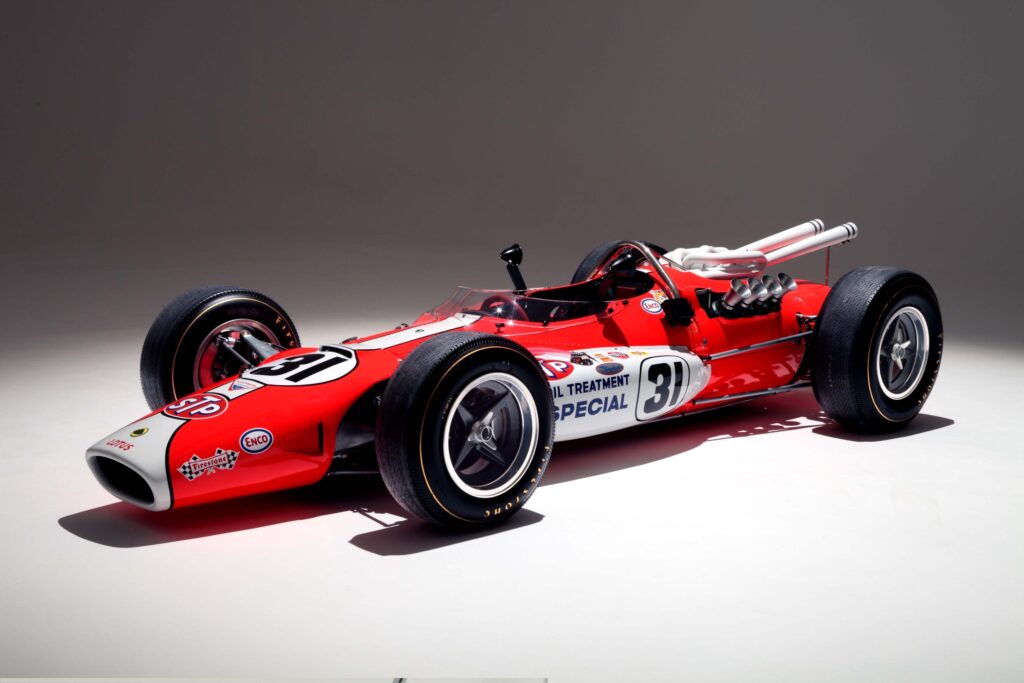
An IndyCar driven by Jim Clark, the Lotus beat rivals from Land Rover Classic and Bentley Motors, and Kev says: “I always wanted to get an award for the work I’d done, and I put so much work into it – over 1,500 hours. It was a team effort, as always, but I was in the charge of that car.”
Since leaving, Kev has worked for Fennell – who wanted to set up his own racing team – in Cambridge, before returning to Norfolk to work for Mirage Engineering, again looking after classic race cars and Japanese driver Katsu Kubota’s Lotus 72 (among others).
Chance meeting led to ’64 VW split screen camper
It was while working at Lotus that Kev’s long-held dream of owning a Splittie came true by pure chance.
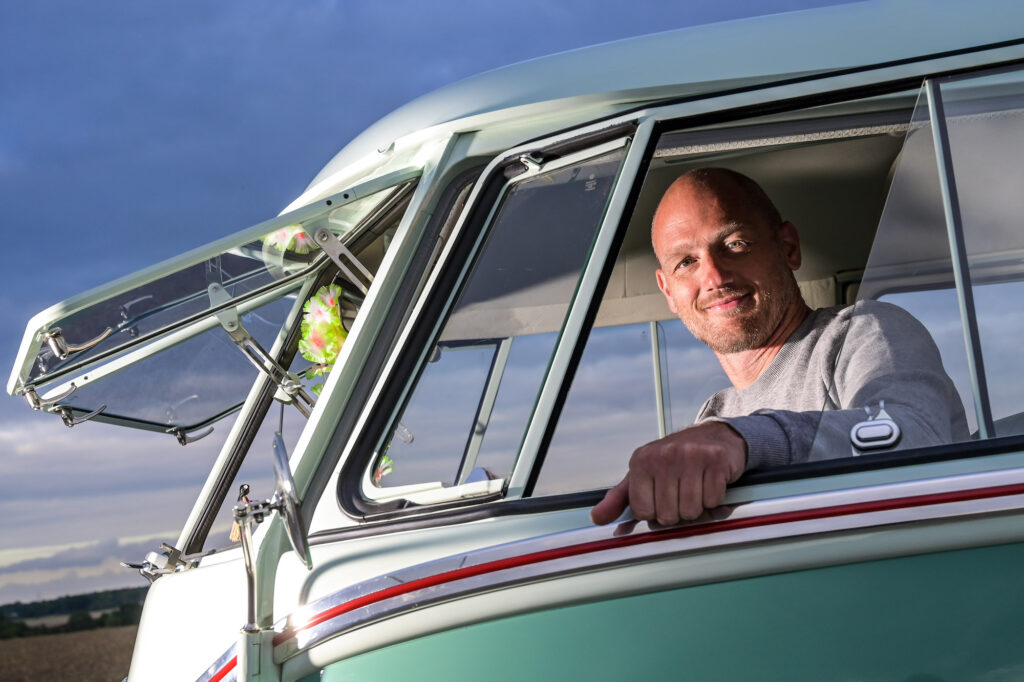
“I’d fancied one since I was about 20, and I remember buying a moneybox in the shape of a split screen,” he says, laughing. “I thought ‘I’m going to put money in there to save up’, but that never really happened. But I always thought one day I might buy one.”
That day came in 2013, when a man called Ted started work at Lotus.
“The first day I was working with him, I was just showing him how we work, and I asked him ‘what do you do as a hobby?’” says Kev. “He was a bit sheepish and said ‘I’m into VW campers’, and I said ‘oh really, so am I’. He perked up then, and told me he had a 23-window Samba.
“I asked him if he had any for sale, and he had imported the Samba, five pickups, and this one. It turned out he only lived half a mile from me, so I went to have a look at it.”
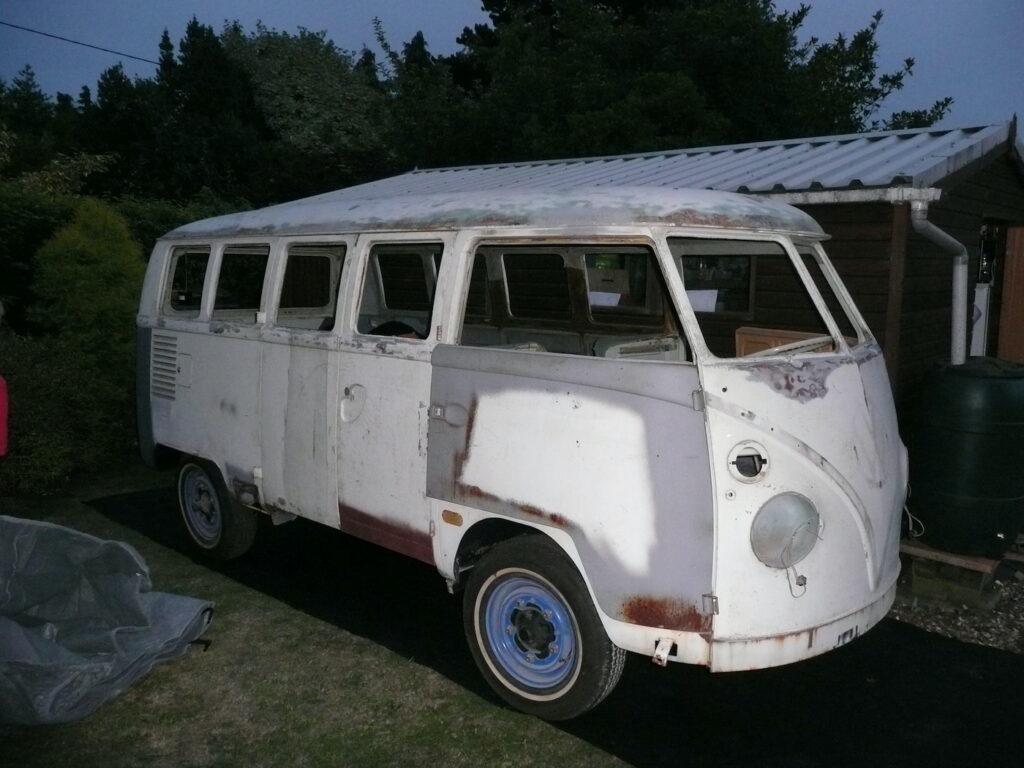
Before he’d even seen the VW, Kev had told Paula he was after a bus with chrome trim in two-tone white blue and turkish green.
“It was white and blue when I got it, but I looked at the M-code and the colours I wanted were the original colours of this bus,” he says, “which I thought was strange. I thought ‘I’ve got to have it’.”
Paula had some questions, however: was it the right time to buy it, and how long would it take?
“I told her ‘it’s got everything I wanted’, which it did – but I didn’t tell her it all needed replacing,” he laughs.
Split screen was in a state, though ‘not horrendous’
The bus was in a bit of a state, “though not horrendous”, and Kev and Ted struck a deal for £5,500.
Within a couple of weeks, it was sitting on his mum and dad’s lawn, before a timber garage was constructed to house it.
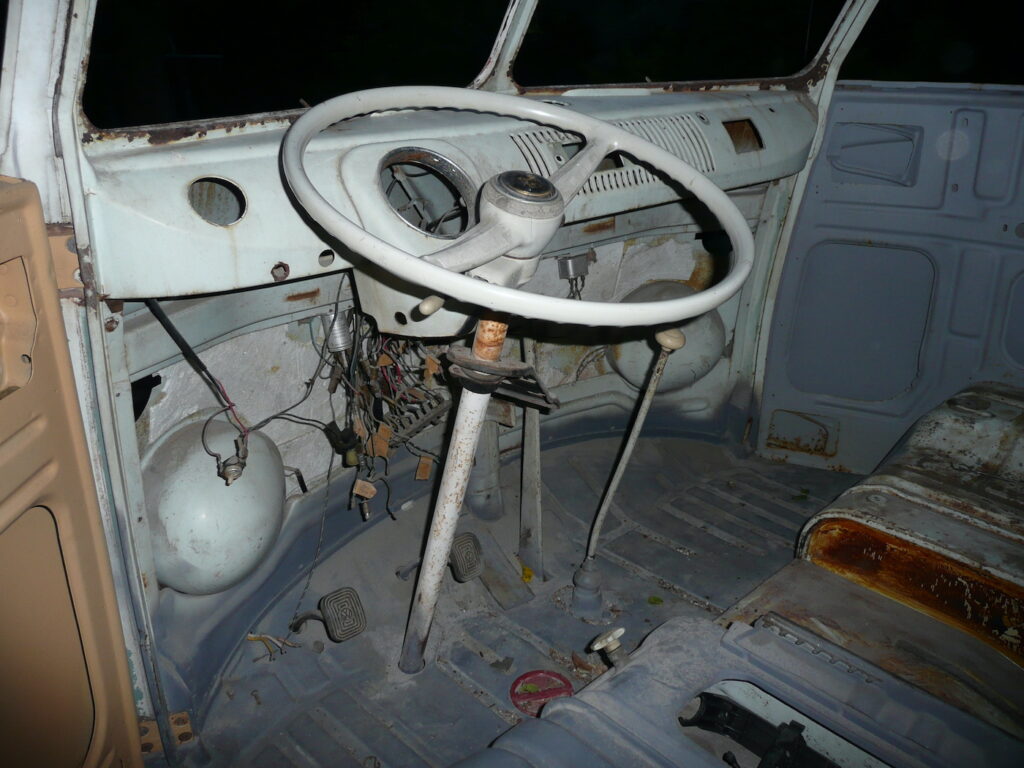
“Whoever had started working on it in America had done an awful job,” says Kev. “They’d pop-riveted the front floor on, so that came off. There was no engine, but it had all the glass, doors, bumpers, and running gear.”
At the time, Kev was working during the week and often going away to race meetings overseas at the weekends.
“I was doing a week’s work, and then going maybe to America, Mexico, all these different race meetings,” he says. “I’d come back and have to start to prep the race cars again, so the last thing I wanted to do was to work on the VW.
“I said to my Paula ‘I’m just going to put it away, I haven’t got time for that at the moment’, because we were also busy doing house stuff and all that.
“But I did start doing some bits on it and I kept uncovering things, so I never really put a timescale on it. It was always next year, next year. I wanted it to be right the first time I took it out.”
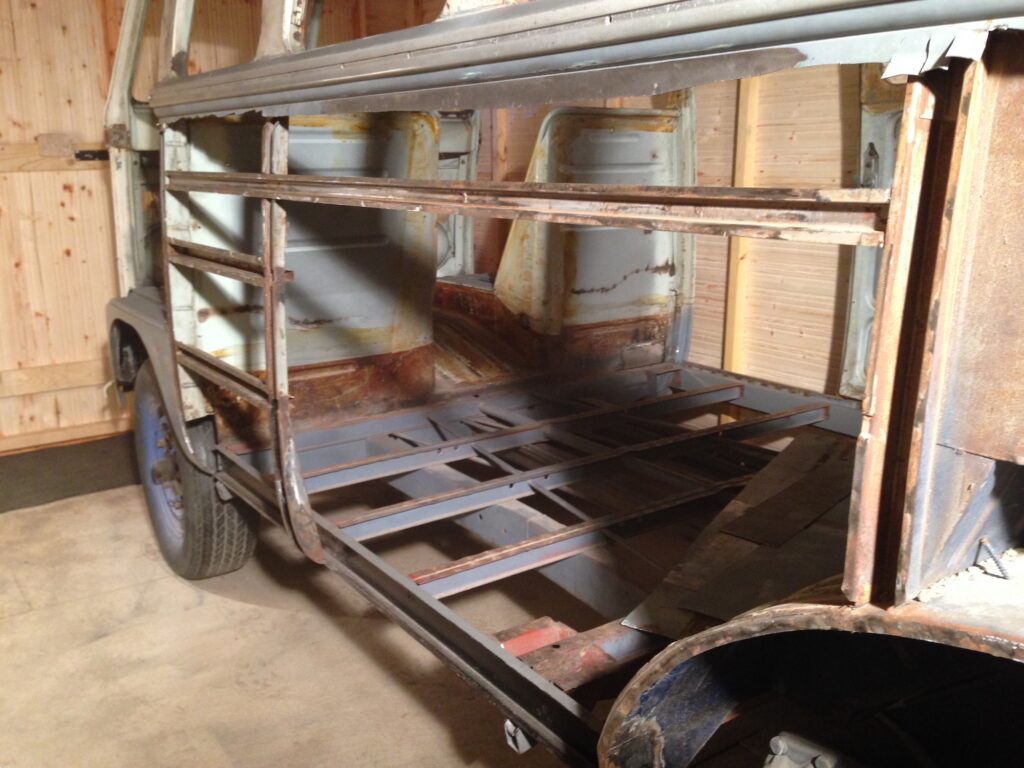
Work did progress though, albeit slowly, with the welding taking up most of the first three years, including significant work on the front floorpan, rear corners, door skins, cargo skins, cargo floor, underneath the windscreen, some outriggers, and smaller sections on the roof and lower side panel.
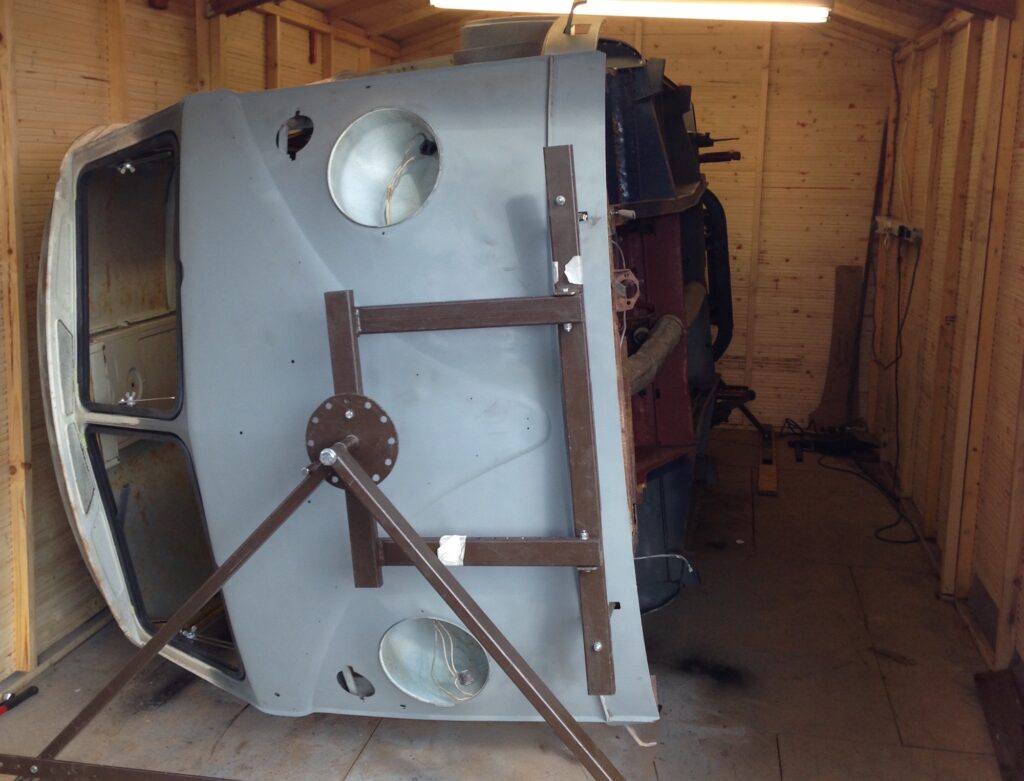
The need to make it right
“Some years I had no money, because I was spending it on other stuff, and some years when I did have money, I’d have no time,” says Kev, 42. “So I was just plodding on with it, really. I go into so much detail that if it isn’t right, I need to change it to make it right.”
For example, all the original bolts were blasted then zinc-plated, and the suspension was painted rather than a thicker powder coating so he could still make out the small details like the tiny VW logos and numbers.

The original window frames were also blasted, zinc plated, powder primed, rubbed down, primed again, and finally given a top coat.
With all the welding done, Kev did all the rubbing and priming prep work before taking the bus to Jake, a long-time friend, at Lustre Coatings for the two-tone finish, which is simply stunning.
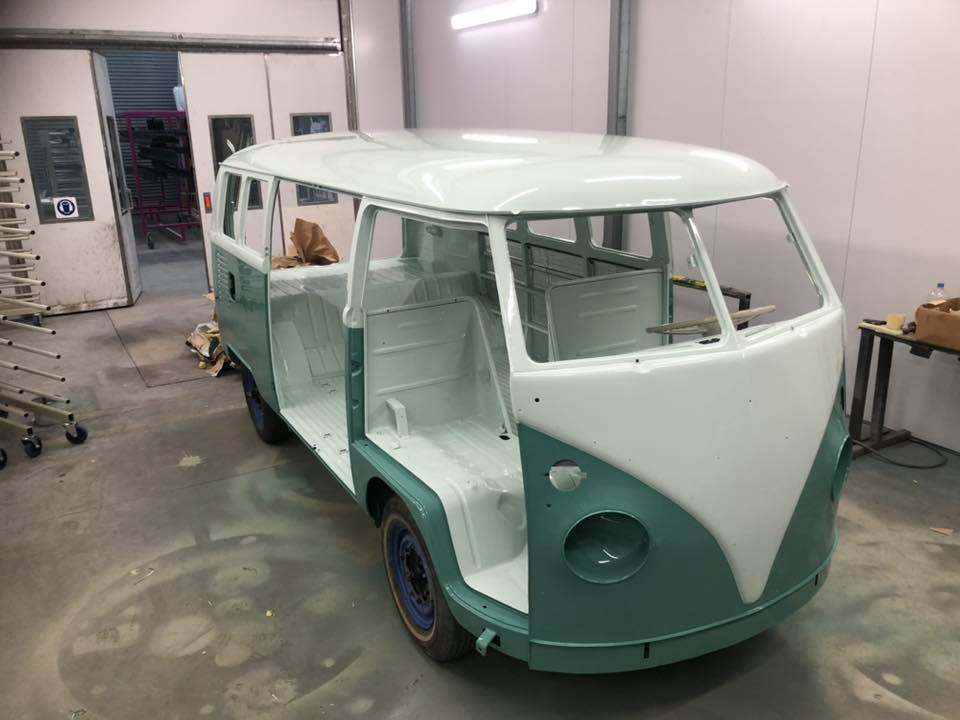
There was no interior to speak of, apart from the front seats, dashboard, and some ropey headlining.
“I took the headline down and there were all these hornet nests, or whatever insects they have in Texas,” says Kev, fitting new headlining, as well as getting the seats reupholstered, and sourcing the original door card material.
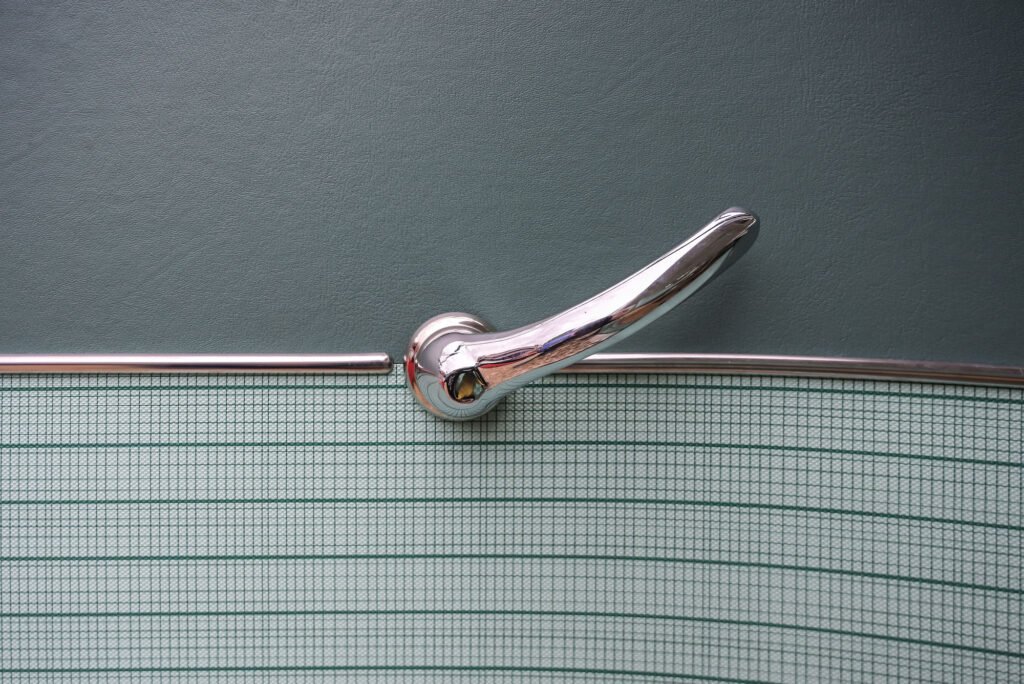
Searching for a clock
“It didn’t have a clock, so I had to find one. I’d turned the bus from 6v into 12v, so I needed to find a 12v clock, and they only did them for one year, 1967. I managed to find one on eBay that worked and was in really nice condition, but I had to pay £550 for it.”
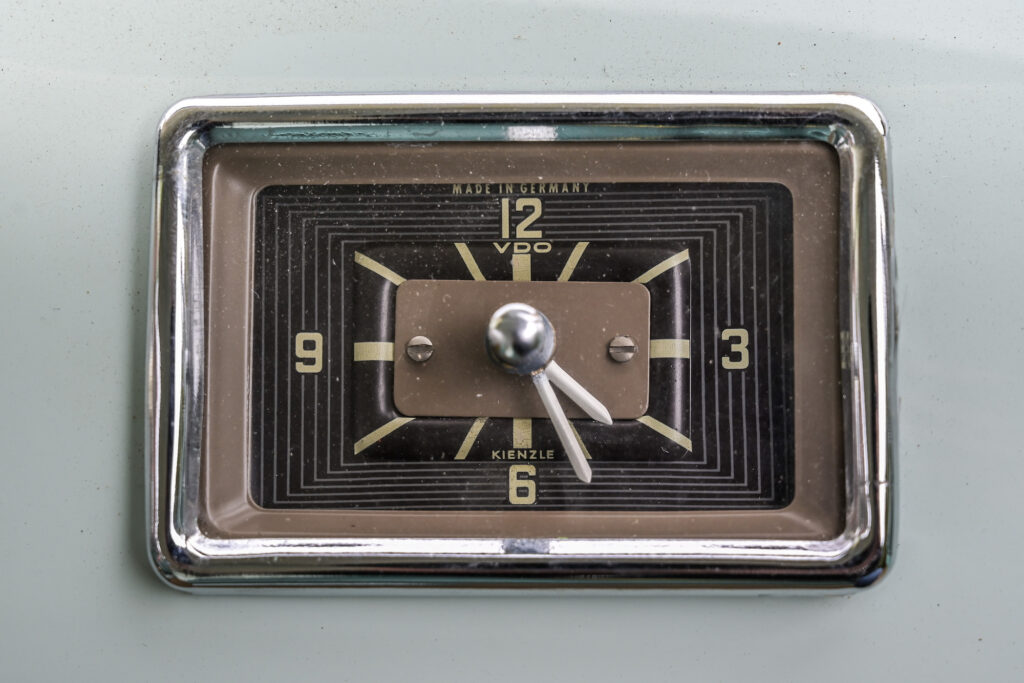
The original Deluxe chrome trim was slightly dented and, as Kev was seeking perfection, was replaced, as were the out of shape bumpers.
“It just wouldn’t have been quite right,” he says. “The bumpers were quite badly out of shape and, while I tried to straighten them, it wasn’t to be. I’d always have looked at them and thought ‘that’s still on the wonk’.”
As for the engine, it was the last thing to be fitted, despite being one of the first things bought for the van.
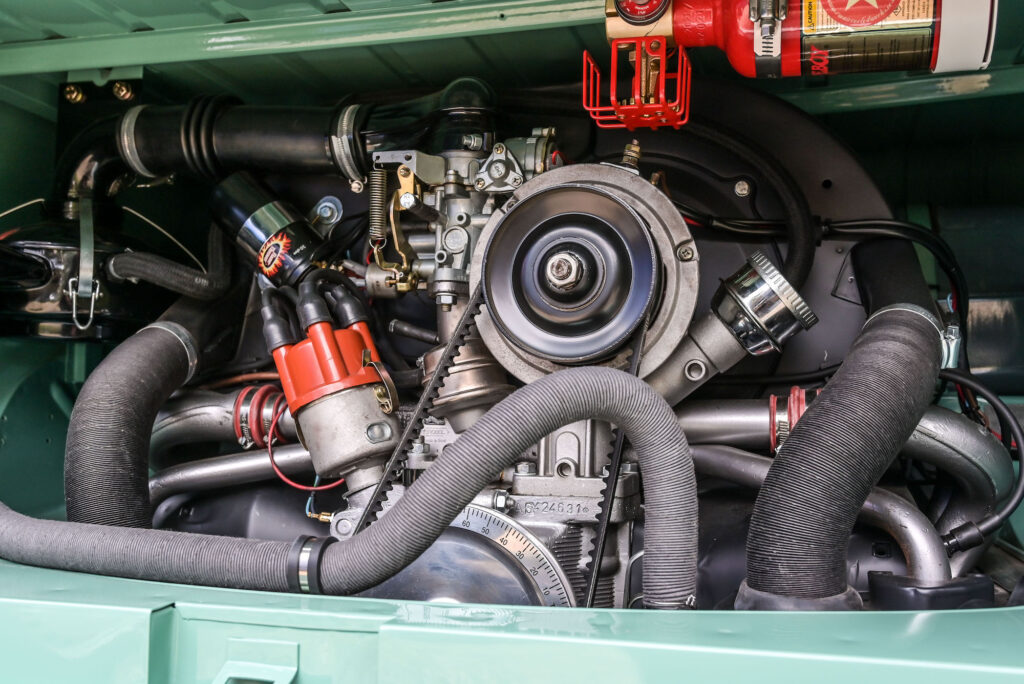
“The first year I had it, dad said ‘you haven’t got an engine so I’m going to buy you one for Christmas’,” says Kev. “He found one on eBay, and it sat in the garage for nine years.
“It was supposed to be a runner, and had all these nice bits on it, but it was very oily. I’d gone to so much trouble doing the body, I wanted the engine to be good as well, on the button.”
So he took the engine to the VW Engine Company in Kent and exchanged it for another 1600cc twin port, this one from a 1974 Bay camper.
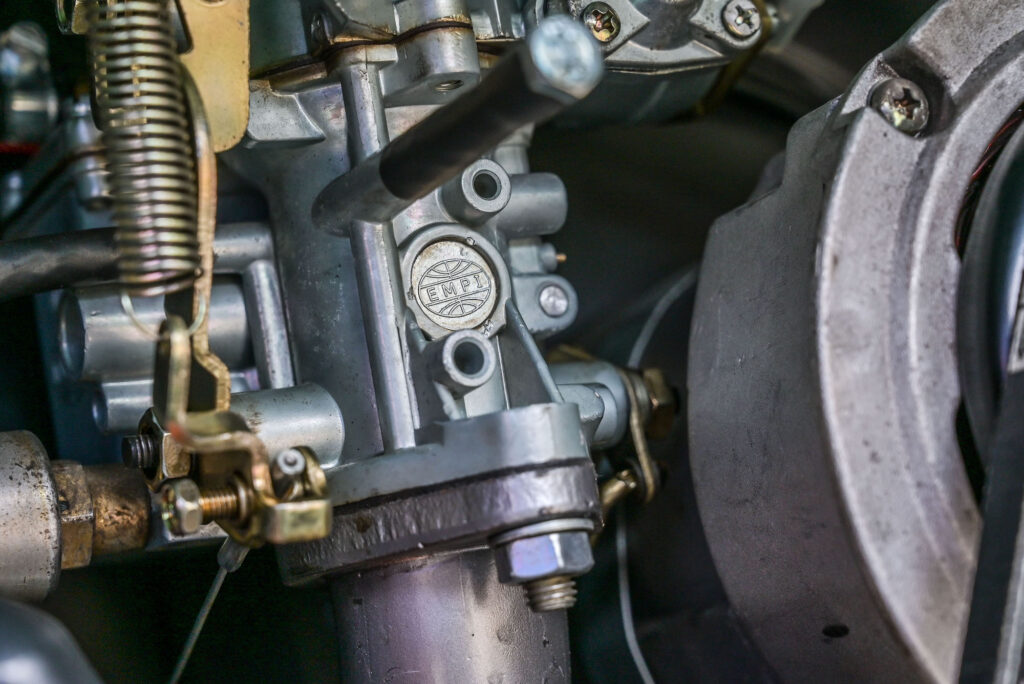
It’s slightly more powerful than the 1500cc single port engine that would originally have come with the ‘67 Splittie, while the brakes have also been updated with a servo.
Maiden voyage in split screen camper after nine years
By happy coincidence, nine years to the day that Kev bought the bus – on August 25, 2022 – it was ready for its first journey.
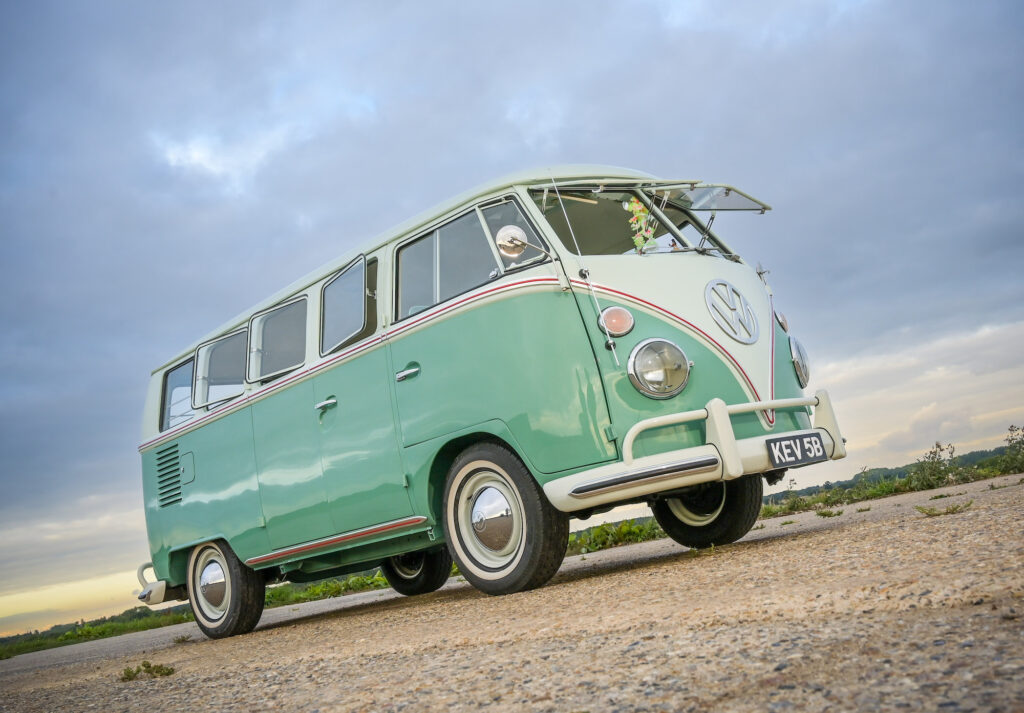
“There was a balloon festival at Old Buckenham Country Park, and we were going camping, and I wanted to get the bus there and get a shot of it with a balloon in the background,” says Kev. “So I just literally went to my parents’ house every minute, every hour, every second of the day to get it ready in time.
“On the day, we camped up and Paula said ‘are you going to get it?’ ‘I don’t know, I haven’t even driven it yet’. Before I’d bought it I’d never sat in one, never driven one – that was the first time.
“It was a bit strange, sitting over the front wheels, with an old steering box – it was very much like driving a bus, but it’s just about getting used to it.

“Certainly when you jump back into a modern car you’re thinking ‘thank you, thank you, thank you’.”
Beautiful ’64 split screen camper
This beautiful camper is likely to be seen out and about on the Norfolk coast, and potentially further afield.
“We keep going to all these places and thinking ‘I’d like to go there, and there, in the bus’,” says Kev. “Just sit and have a coffee on the coast, or down to Devon.
“I think just getting it on the road is an achievement, so I just want to use it and enjoy it, although people keep saying I should use it as a wedding vehicle.
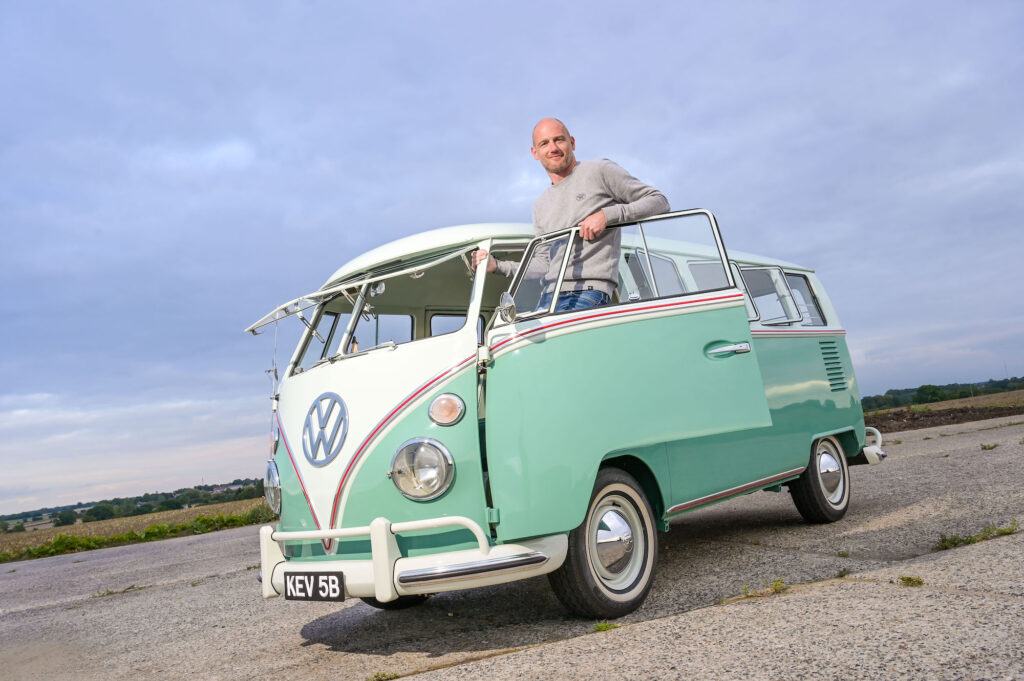
“It’s a great colour for that, and I wouldn’t mind doing one or two to see how it goes, but I’m not sure about people jumping in and out all the time…”
It may not be an F1 car worth more than £1m, and it may be happier at 50mph than 150mph, but Kev’s restoration principles remained the same.
“I did exactly the same thing, every t was crossed and every i dotted – if you do it properly once, you won’t have to do it again,” he says.
